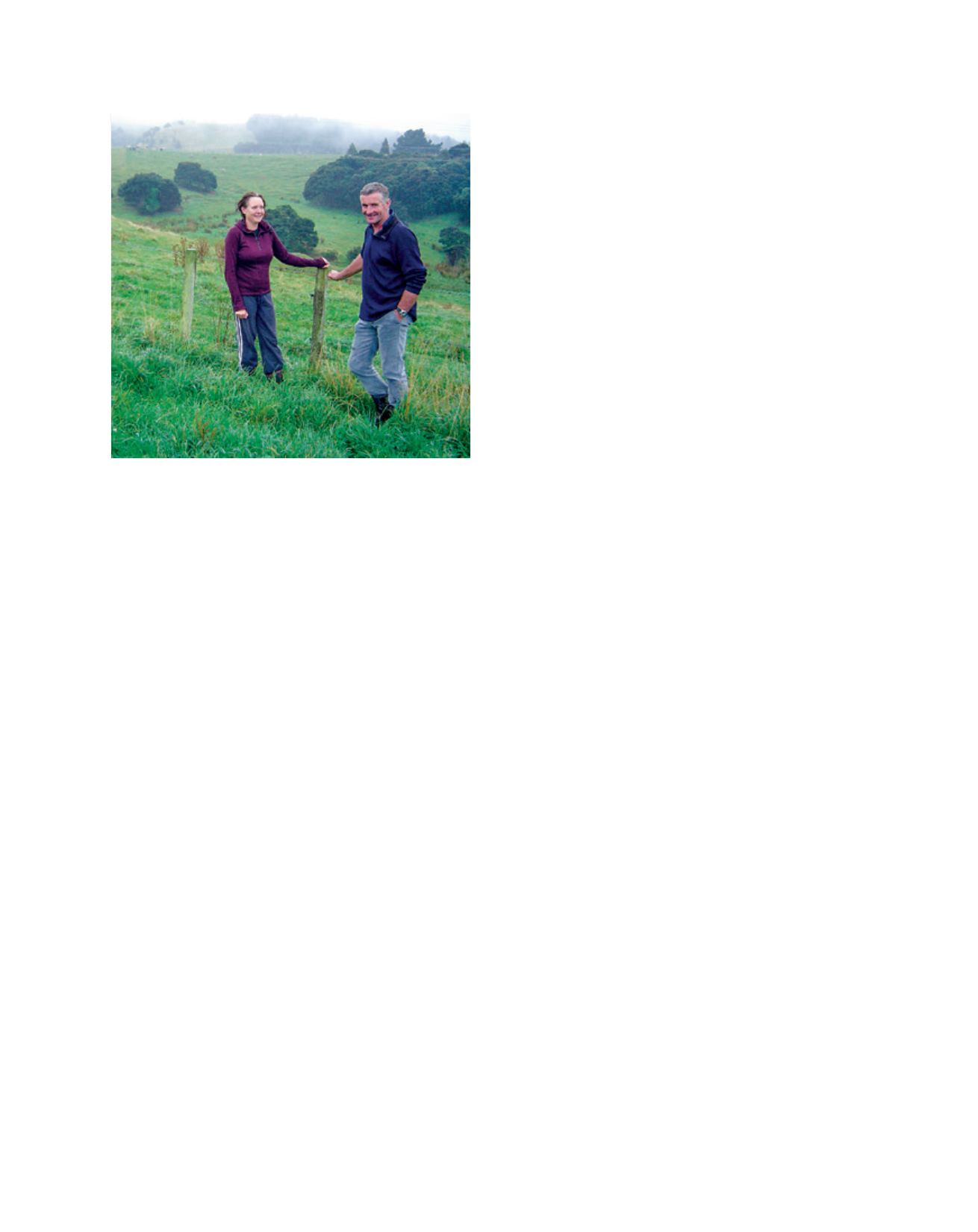

[
] 167
Image: Federated Farmers of New Zealand
A husband and wife working together on the family farm
to supplement income derived from the farm business. Some
farmers diversified into other activities and altered their enter-
prise mix. But mainly farmers just reduced costs and focused on
producing higher value products where these were shown to be
profitable. Financiers were quick to realize that there was little
point in forcing farmers off their land. Throwing away the skills
of farmers made no business or banking sense. Many farmers had
their debts restructured and then continued farming.
New Zealand now boasts the lowest level of agricultural
support for industrialized countries in the Organisation for
Economic Co-operation and Development. The level of assis-
tance to agriculture in New Zealand now represents around
1-2 per cent of farming income. What support New Zealand
farmers receive is mainly in the form of government funding
for agricultural research.
From a global perspective the main message coming from
New Zealand is how different and advanced its family farming
structures are to those of the rest of the world. One of the
key differences between New Zealand and other countries is
that New Zealand exports the vast majority of its agricultural
production. This makes it a significant player in world trade
of food stuffs, where it is either top or very high on the lists of
exporting countries for a wide range of food products, includ-
ing meat and dairy products.
New Zealand is fortunate that agriculture is well accepted
as its economic strength with the commodities produced
forming its main income, and as a general rule it is a country
where no one suffers from malnutrition. Its infrastructure and
support systems are world leading, with innovation being a
core stay of its leadership in the production of safe food.
Farming remains New Zealand’s core income earner. It
employs a large number of people, supports many families and
is the main contributor to local communities. In the success
story of New Zealand’s agriculture it is often forgotten that
farming offers more than just safe food. The food that farmers
produce provides fuel for human activity, delivers environ-
mental services and social goods that facilitate community
development, industrialization and diversification.
Families have changed the way they farm, with one family
often owning more than one property. New Zealand is in a
new era of farming with an increase in the ‘corporate family
farmer’, a changing climate and more scrutiny on its envi-
ronmental performance. Even with all the many external
pressures and no subsidies, it is encouraging to see rural
communities flourishing. Farmers are meeting the demands
of modern consumer expectations around producing safe and
environmentally friendly food.
New Zealand is proud to be one of the world leaders in the
production of healthy and sustainable food. There is nothing
like eating a freshly picked apple or a barbequed lamb chop
from a New Zealand family farm. With all the ups and downs
facing farmers, New Zealand is certainly playing its role in
supporting local communities, providing food for the world
and protecting the environment through the family farmmodel.
With the continual changes on New Zealand’s farms, succes-
sion has changed from the traditional father-to-son handover.
Now, farmers are exploring new models of succession that will
ensure the farm business stays strong, and that all involved
members of the family derive a long-term benefit from the farm
and have a level of involvement they are comfortable with. This
often involves increasing land ownership and stock numbers,
and seeking outside investors. Because of the larger farms, the
number of operating family farmers has reduced, but it remains
high at around 90 per cent of all farming businesses. A family
farm in New Zealand is defined as one or more farms that are
owned and operated by members of the same family.
According to latest statistics New Zealand has around
58,000 farms covering approximately 54 per cent of its total
land area. Of this total, around 25,700 farms are sheep, beef
cattle and grains farms, and around 16,000 are dairy cattle
farms. Other farm types include deer, pigs, goats, poultry
and horticultural operations. New Zealand’s agricultural
sector in total remains an important source of employment.
Approximately 79,000 people (excluding farm owners) are
employed in agriculture – around 4 per cent of all employ-
ees. Many more are employed in downstream and upstream
activities. This highlights how family farms are important in
boosting local communities and providing economic secu-
rity to New Zealand.
As farming becomes more innovative and attuned to
consumers’ demands, New Zealand will remain at the fore-
front of the world. The country has entered in a new era of
farming with greater use of technology, a change in what it
produces, an increase in larger corporate farming, a changing
climate and more scrutiny on its environmental performance.
New Zealand is a proud nation that relies on farming as
its main economic mainstay. It is thanks to the removal of
government subsidies and the resilience of the early farming
families that it can truly say that what it has achieved in agri-
culture production from a population of 4.5 million people is
yet to be equalled by any other country. If the global world of
family farming could follow New Zealand’s lead then maybe
between us all we would be able to produce enough extra
food, so that all of us can be fully nourished as we work
towards preserving the environment for future generations.
D
eep
R
oots
















